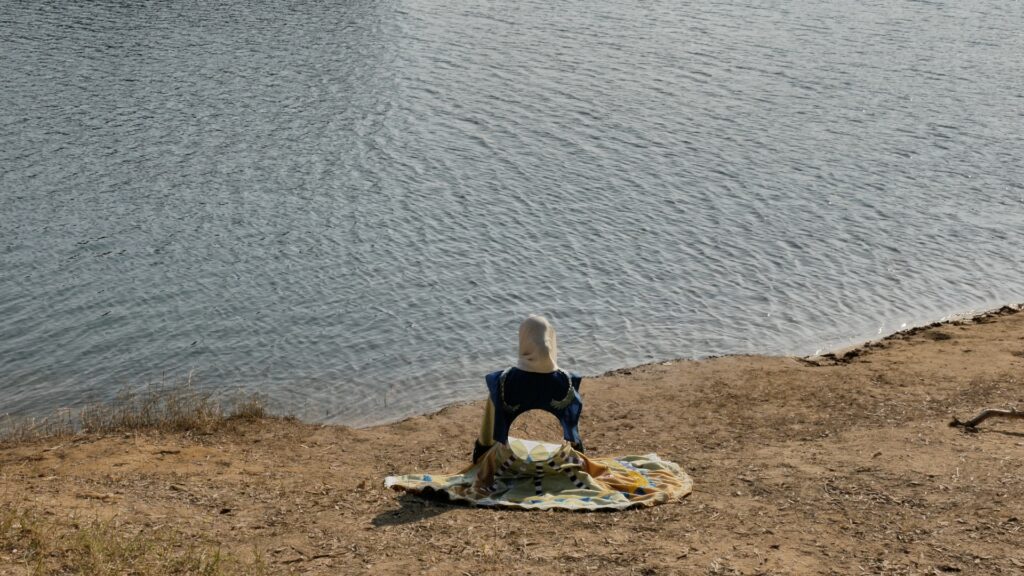
Nieuwe Instituut (Rotterdam), TBA21 (Madrid), documenta Institut (Kassel) and Mimosa House (London).
Dissolving Earths is a programme of new artist commissions, texts and podcasts that seek new dialogues with our geological pasts. It explores the vast expanse of the permafrost landscape with its complex mythologies and ecosystems, where organic and non-organic matter from across millennia meet, and redirect new futures.
The programme includes new work by al-yené, Bo Choy, Shezad Dawood, Daisy Hildyard, Maya Kust, Lukáš Likavčan, Natalia Papaeva and Himali Singh Soin. With Carolina Caycedo, Sayana Namsaraeva, Astrida Neimanis, Elizabeth Povinelli, Rodion Sulyandziga and Nikita Tananaev.
—
We live in a moment of precarious futures; earths are rapidly shifting below our feet. Our imprinted pasts and the markings of our presents, redirect planetary futures in ever more seismic ways. Dissolving Earths seeks a dialogue with our geological pasts, from which to reach out to possible futures.
The fragile permafrost landscape is a thriving ecosystem, teaming with life, mythology, histories and futures, hidden just below the surface. Its frozen soils, some of which are hundreds of thousands of years old, are a place where the suspended lives of the deep past merge with the present as they are exposed by the thaw. Organic and non-organic matter from different millennia meet; a glitch in perceptions of linear histories. As this happens, new futures are put in motion for both human and non-human communities, locally and across the planet.
Dissolving Earths emerged out of shared conversations between artists, writers, ecologists, geographers, hydrologists, anthropologists, astronomers, shamans, and others – both whose lives and work are embedded in the Siberian permafrost regions and those tracing their implicated relationship from afar.
Engaging with the differing worldviews that have emerged from the languages and cosmologies indigenous to these disparate landscapes, the programme of discussions, texts and new artist commissions delves the punctured surface of thermokarst pools, the organic biomes suspended in the frozen soil below the tundra, and into the depths of the sacred Lake Baikal. Conversations and collaborations explore the terrifying chasms of the Batagaika crater, which open up a ‘mouth to the underworld’; ancient creatures of the deep past which are exposed as the permafrost thaws; and the rewilding project Pleistocene Park which seeks to recreate the mammoth steppe from 12,000 years ago.
Dissolving Earths considers our personal and collective imprint on this precarious and vital landscape, whose rapidly changing environment plays a seismic role not just for the people of Siberia, but for the future of the ecology of our planet. Bringing together diverse scientific, artistic, and indigenous knowledge, Dissolving Earths addresses these subterranean environments and the stories they hold: past, present, and future.
A Note of Positionality
Permafrost, in its differing forms, covers almost a quarter of the northern hemisphere’s landmass, most of which is in Russian territory. As its rapidly thawing state releases terrifying quantities of methane and carbon into the atmosphere, it is the most vulnerable communities on the planet who will suffer most immediately. Inviting reflection from both those whose lives are embedded in Siberia’s indigenous lands as well as many who have no direct connection to it, Dissolving Earths stresses that we are all implicated in these landscapes and ecologies, wherever we live.
Dissolving Earths was due to launch in March 2022. Initiated by Undead Matter, it was originally funded by a British Council grant and organised in collaboration with a major non-governmental cultural institution in Russia. In the wake of the Russian invasion of Ukraine, the project was put on hold due to the UK sanctions against Russia. As the programme seeks to give a platform to indigenous voices, communities and ecologies from Siberia, who have been oppressed, exploited and extracted from by the Russian state historically as well as in the present time, we believe that it is even more important to publish this project now.
We would like this later launch to recognise the continued violence of historical colonial oppression and its new capitalist guises that many people and ecologies still face across the globe.
Dissolving Earths is a project by Undead Matter and released in partnership with Nieuwe Instituut (Rotterdam), TBA21 (Madrid), documenta Institut (Kassel) and Mimosa House (London).
Curated by Sophie J Williamson. Curatorial team, Yulia Gromova and Timur Zolotoev.